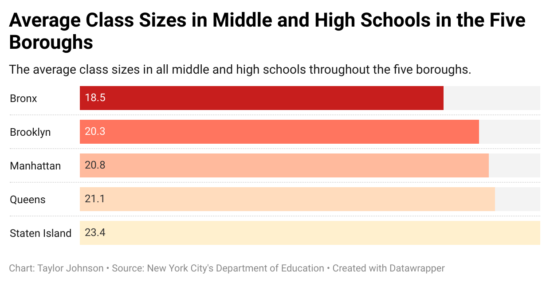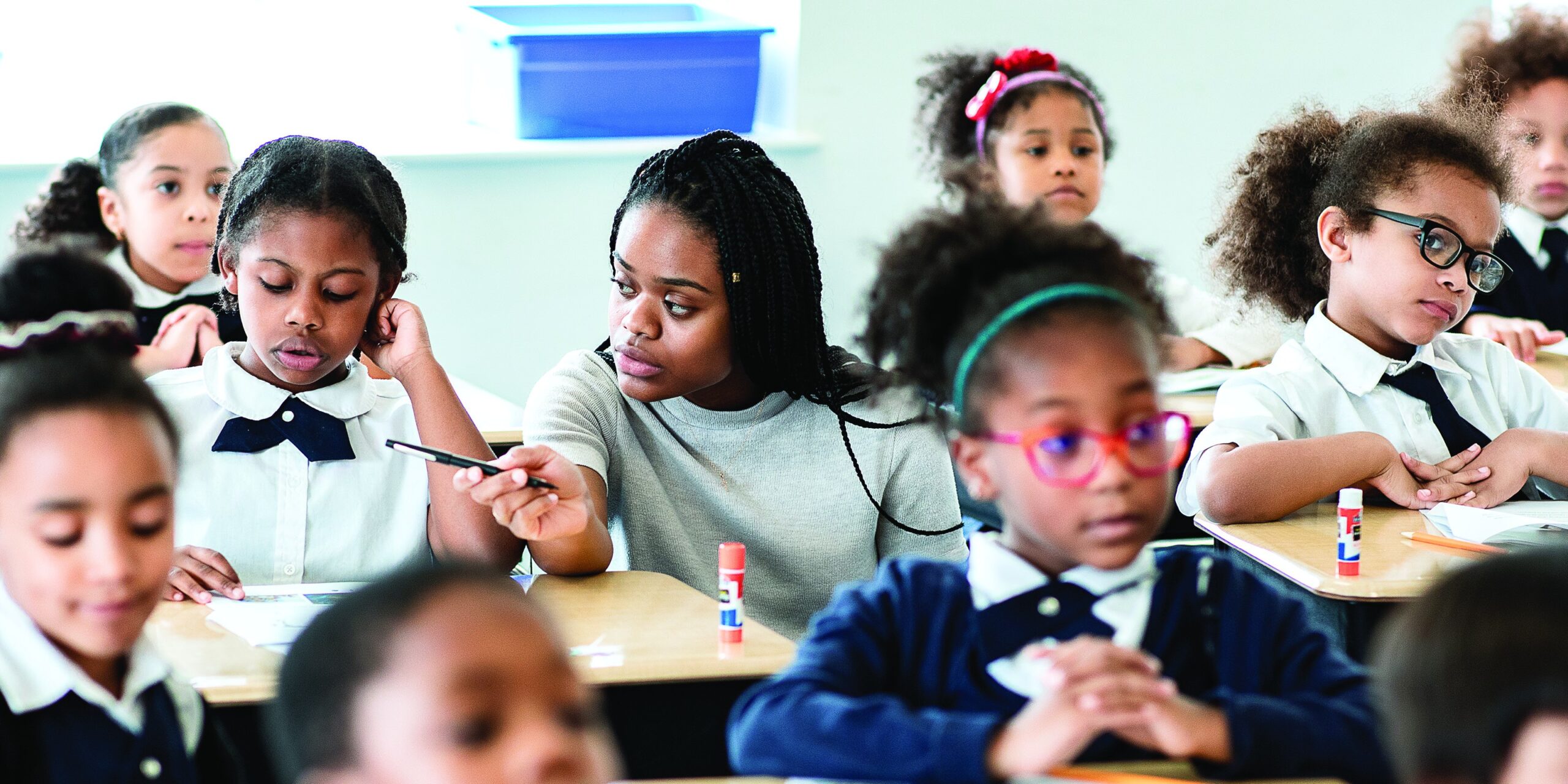New York City lawmakers are considering whether to mandate smaller class sizes to guard against the spread of COVID-19 in local schools.
Bill 2374 before the City Council would require classrooms to provide 35 square feet of room—the size of a small storage unit—per student by 2024.
Leonie Haimson, founder of Class Size Matters, testified before the council’s Committee on Education in October in support of the new bill. Class Size Matters is a nonprofit, nonpartisan organization dedicated to advocating for smaller classes, according to its website.
“Students who are in smaller classes do better in every way that can be measured,” Haimson testified. “They get better grades, higher test scores, are more likely to graduate from high school, go onto college and graduate with a STEM degree.”
In classes of 25, 30 or more, it is difficult for teachers to get to know and understand their students so they can provide meaningful feedback and support, she testified.
A Department of Education spokesperson said schools are following public health advice and attempting to minimize class sizes for students. Department data shows that since the start of the school year, testing for COVID has revealed 279 positive cases in the Bronx, 204 of them being students. Citywide, 1048 students have tested positive on department-administered COVID tests.
“We follow a gold-standard approach approved by health experts, and class sizes are capped to ensure every student gets the individual attention and space they need,” a department representative said. “We’re making historic investments to hire more teachers, build new instructional space and support smaller class sizes.”
Haimson’s organization is not alone; the United Federation of Teachers also supports reducing class size. The union created a petition in support of the legislation with over 15,700 signatures as of Nov. 15.
“Understanding that this may not be an easy feat in some school buildings, I appreciate the three-year rollout featured in the legislation, with all schools in compliance by September 2024,” said United Federation of Teachers President Michael Mulgrew when he testified.
Haimson hopes this bill passes soon, as more than 40 City Council members have signed off on it.
Rep. Rafael Salamanca Jr. co-sponsored the bill but does not know when the council will vote on it. He guesses a vote by the full council will happen before the end of the year.
“I think that what this bill does is that it helps, especially students in my communities, who are struggling with day-to-day life issues,” Salamanca said.
Department of Education data shows Staten Island has the highest average class size in middle and high schools compared to the other boroughs, with 23.4 students per classroom compared to the Bronx which has 18.5 students per classroom.

Although many teachers support the bill, others are skeptical about how it will be implemented if passed.
Tamika Myers works as an educator at MS 223/the Laboratory School of Finance and Technology in Mott Haven and worries about the equity of education if the bill is passed.
“I think that the planning behind it has to be solid, it has to be equitable, it has to, you know, consider all types of learners,” Myers said.
Although she actively speaks with her students and parents to open lines of communication, she feels that if the legislation is passed, it will allow her to focus more on the academic and emotional needs of her students.
“I just feel like, the more that we’re checking in, the stronger our relationships with families,” Myers said. “And one of the things I pride myself in my particular school is because we’ve established those connections with families early on.”
Tanisha Shields, assistant principal at the Bronx Leadership Academy High School on Webster Ave., said her school is relatively easy to manage, but she feels smaller class sizes would benefit her students. With around 357 students who attend the school, most classes have an average of 25 to 30 students per classroom.
“Teachers can design more creative projects, spend more time diving deep into work produced by students, while students feel more confident to participate in a smaller classroom,” Shields said.

